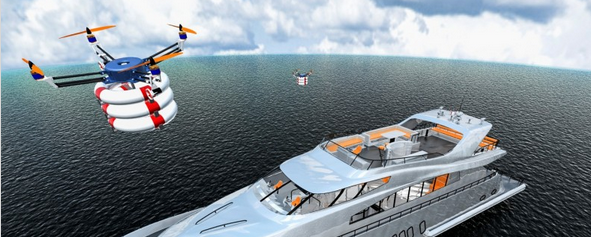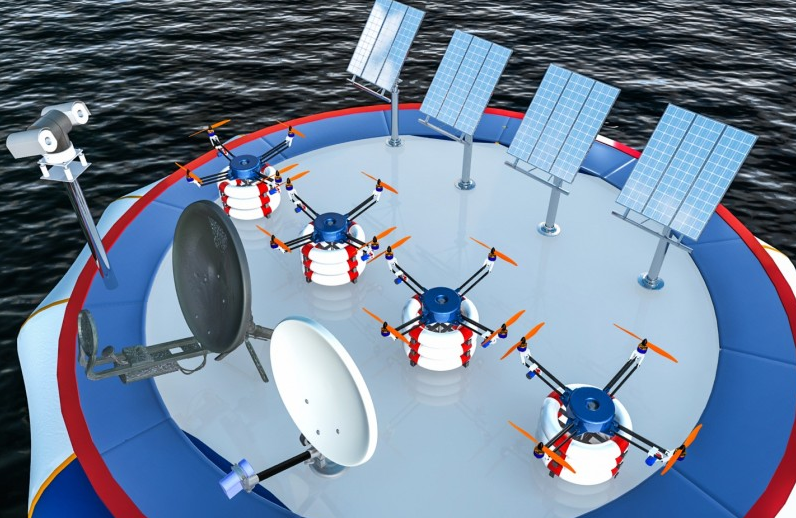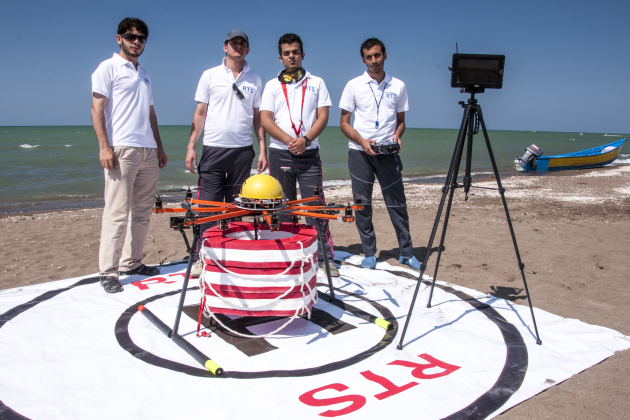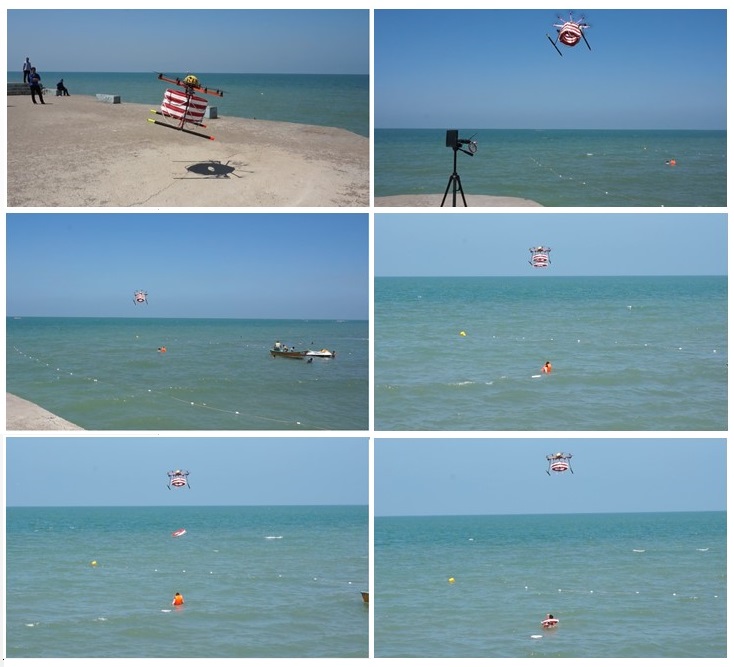Pars Aerial rescue robot tested for the first time, Caspian Sea

Hearing news about drownings at the Caspian Sea Iranian RTS Lab, led by director Amin Rigi, set out to find a better solution for saving human lives at the sea. Their idea evolved from surface robot that could be operated manually and remotely to fully automated flying rescue machine they named Pars Aerial rescue robot.
After successful tests of the surface rescue robot prototype, the team realized they need to build a robot with much better capabilities. The new robot they had in mind would have to act faster and be far more accurate. This is when the idea to create Pars Aerial rescue robot was born.

Four Pars Aerial rescue robots envisioned on self-sustaining platform. Image credit: RTS Lab
We received first news of Pars Aerial rescue robot from RTS Lab back in April 2013. The idea was still fresh at the time but very promising. Since then, the idea grew to a working prototype and first tests were already conducted.
One of the features of this robot is the ability to save more than one life in a mission, it can also track its path by GPS positioning and at the end of its mission it can come back home without the need of user guidance.
Testing Pars Aerial rescue robot

Pars Aerial rescue robot with some team members. Image credit: RTS Lab

Pars aerial rescue robot on test. Image credit: RTS Lab
Thirteen tests were taken at the Caspian Sea in a 4 day period (August 11 – 15, 2013) and the following aspects were analyzed:
- life vest releasing system performance,
- flight stability,
- search and rescue performance at day and night,
- simplicity of robot’s control,
- comparing performance with traditional rescue methods,
- analyzing the deficiencies of robots design.
Pars can fly ten minutes in this design and its maximum speed is 7.5 m/s, thus it can be used in missions with a 4.5 kilometer radius range. Based on the test results and considering the general rescue methods new ideas for developing Pars were achieved that will be revealed after careful scrutiny.
The final test compared the performance between the robot and a human lifeguard. The goal of this test was to rescue a drowning person 75 meters away from coastline. As a result, robot done its mission in about 22 seconds while the lifeguard did the same in 91 seconds.
They also took another test at night. In this test, LED Lighting is used to help user have a better sight to find the robot and life tube position.
Future work
The team is considering many designs for the robots future applications. For example:
- Life tubes to catch the drowning automatically
- Increasing flight range and decreasing rescue mission time
- Sound and image processing
- Controlling the robot with artificial intelligence
- Landing on water for emergency situations
It’s noteworthy to mention that this robot is designed for the first time and that it can make a huge revolution in robot applications for saving human lives.

After they make final corrections and finish the design, the team hopes it will prepare the robot for introduction to international markets. At the moment, their main problem is financial support and they are looking forward to negotiate about sponsorship and investment.
Pars Aerial rescue robot can be used in ships and off shore reliefs. It can also be used in other applications such as monitoring marine and off shore structures, recording films and pictures from dangerous path ways for rescue missions, precise positioning…
Featured image credit: RTS Lab
Submit your articles, research, images or videos here.

Commenting rules and guidelines
We value the thoughts and opinions of our readers and welcome healthy discussions on our website. In order to maintain a respectful and positive community, we ask that all commenters follow these rules:
We reserve the right to remove any comments that violate these rules. By commenting on our website, you agree to abide by these guidelines. Thank you for helping to create a positive and welcoming environment for all.